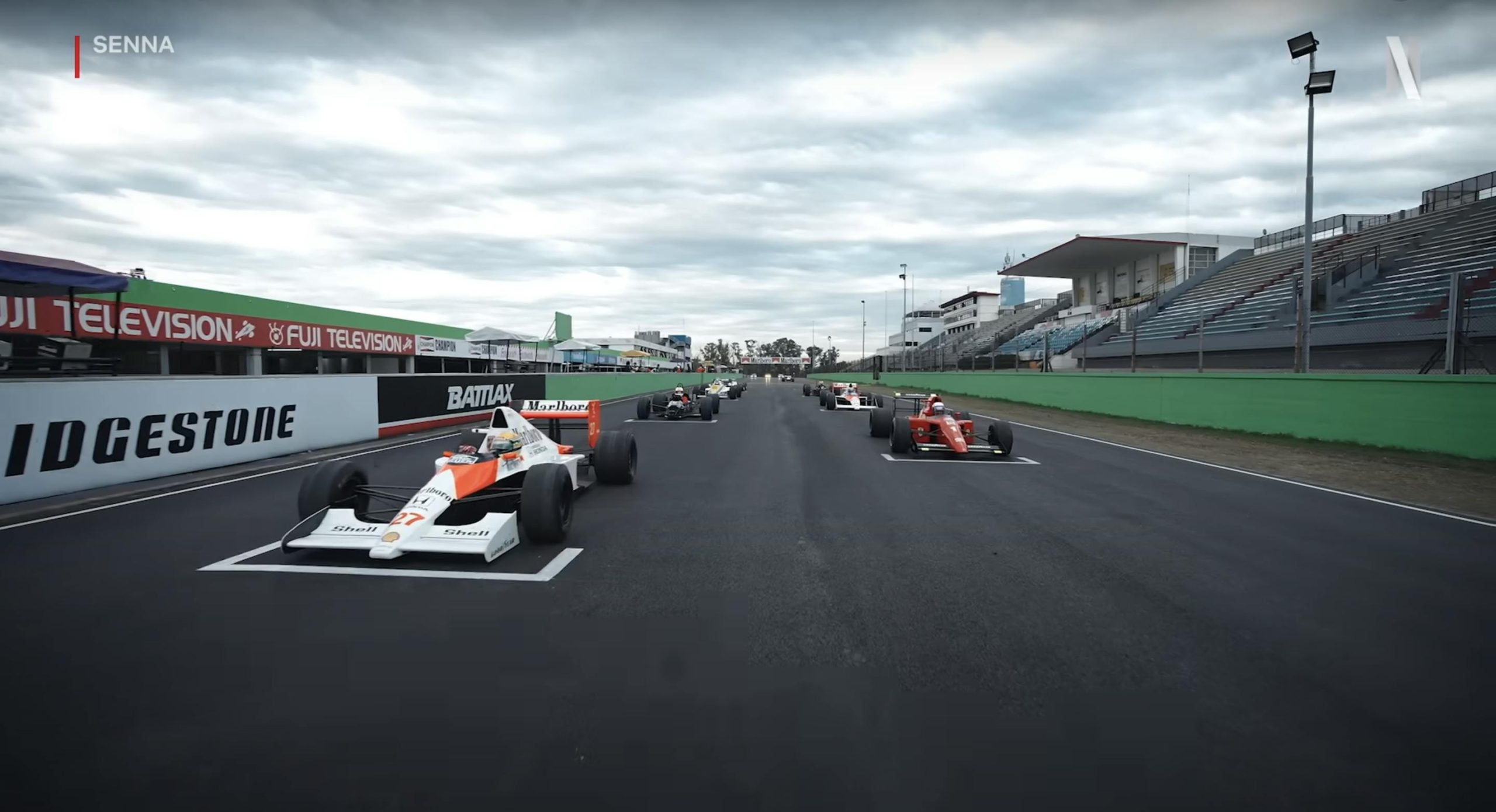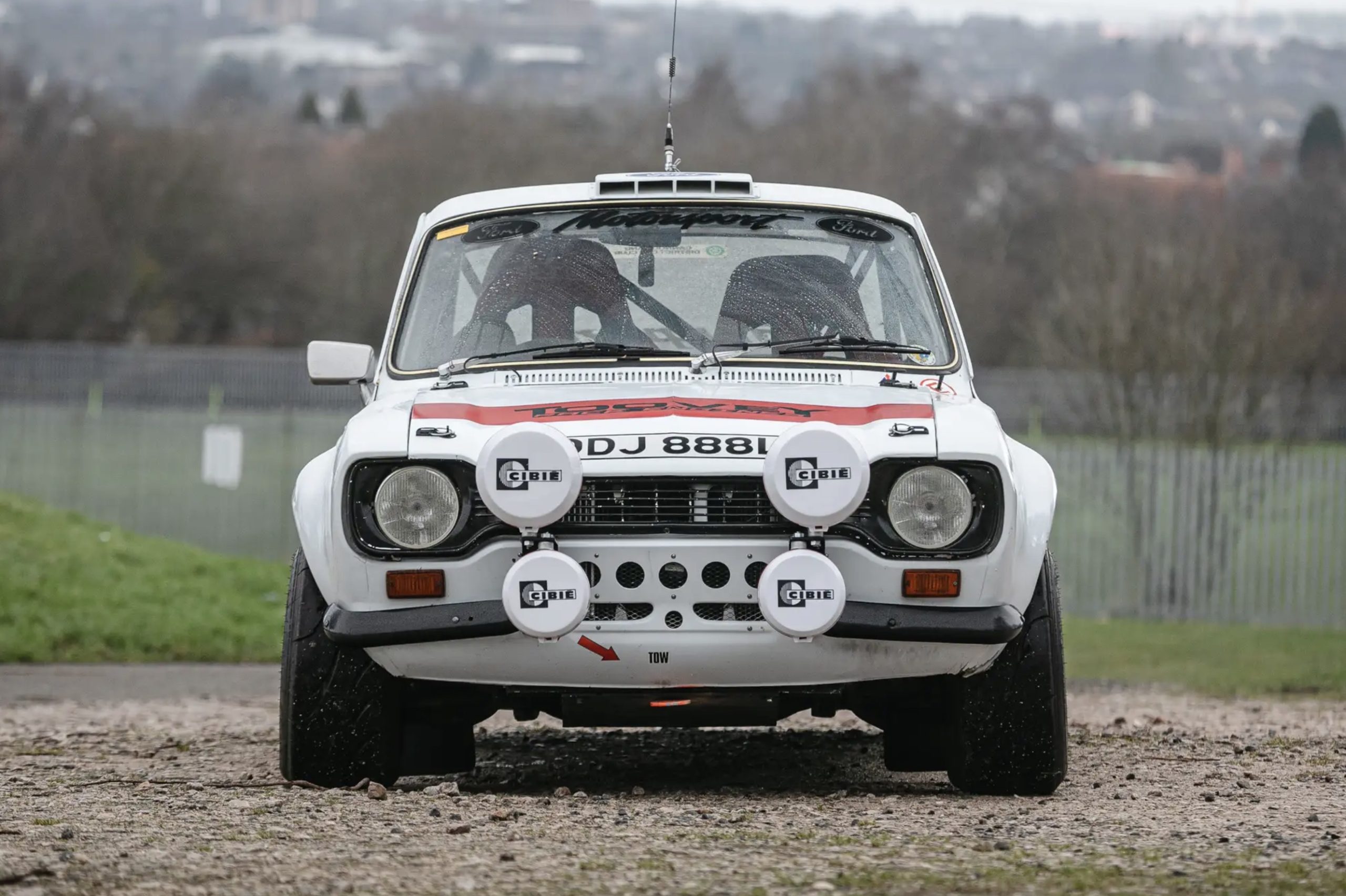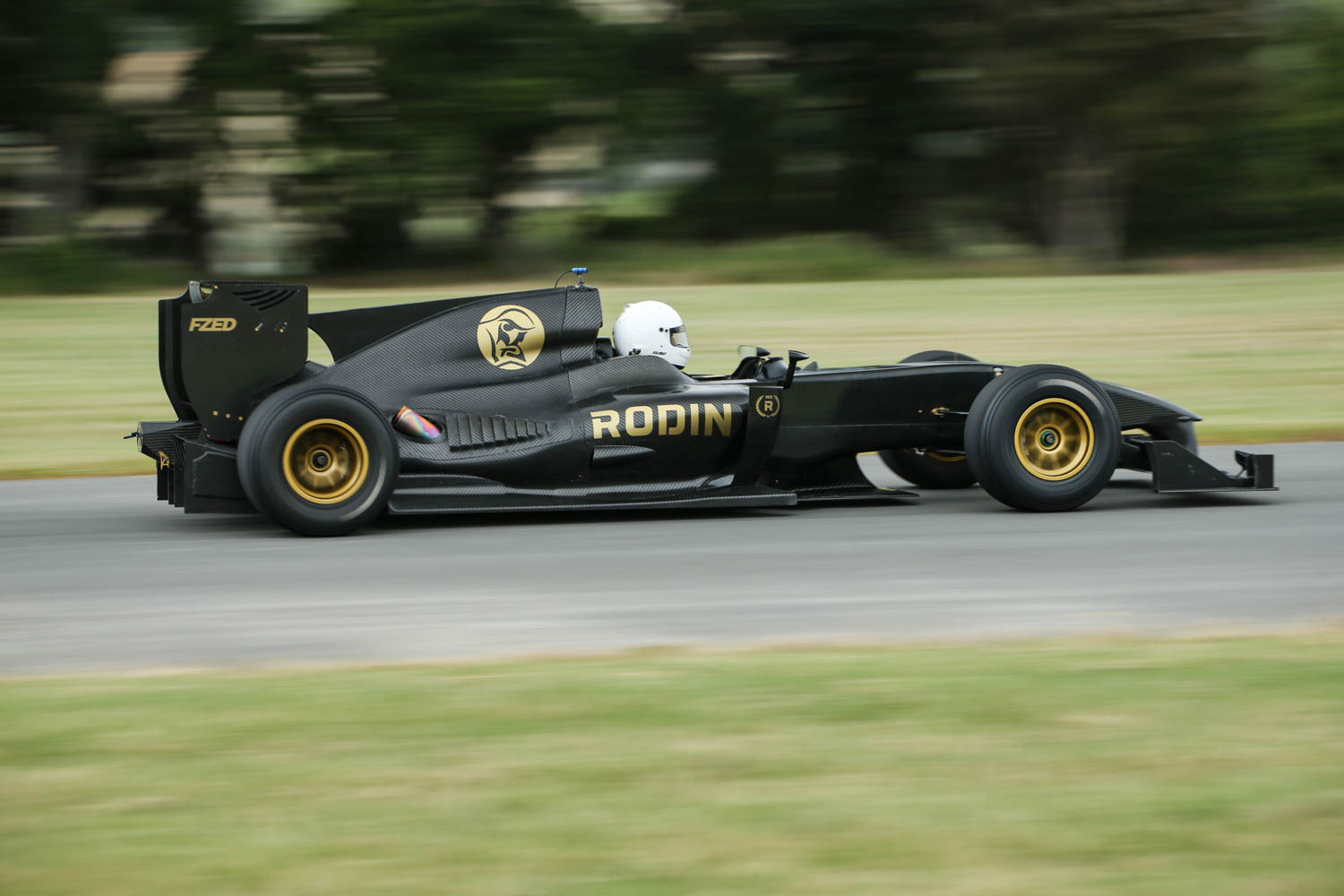The hardest part of writing any story like this is communicating in a way that can be readily appreciated just how fast a car such as the Rodin FZED really is. But perhaps this will help. A quick hatchback like a Ford Fiesta ST provides around 160bhp per tonne of weight it has to carry. A properly rapid sports car like a Porsche 911 Carrera S clocks in at around 280bhp per tonne. Real hypercars like a Bugatti Veyron or McLaren F1 offer around 550bhp per tonne which, if you think of a one tonne city car with that kind of poke, is fairly remarkable. The Rodin FZED? Double it. It has no less than 1100bhp per tonne. More than a horsepower for every single of its 609 kilogrammes, in other words.
Now think of the kind of pace such numbers might yield and then, finally, consider that the FZED’s acceleration is by some margin the car’s least impressive aspect. Of which more in a minute. But first of all, a quick look at a car that really is the next best thing to a real F1 car that any rather rich mere mortal could hope to own. It costs £500,000, or not much more than a top flight GT3 race car.

The car exists thanks to a rather wealthy chap and Rodin founder called David Dicker, who left Australia sick of living in what he describes as ‘a police state’ and decamped to New Zealand’s South Island where, by comparison, you can do what you like. Which in his case involved building not one but three tracks, a factory with some of the world’s most advanced 3D titanium printing machines and a state-of-the-art pits complex. Why? Partly because he can, but also because he had dream of designing the ultimate track car.
And the funny thing is, the FZED isn’t it. It’s his practice car. The real deal is called the FZero and will be ready later this year. Designed almost entirely by Dicker himself, the FZero will have a bespoke 4-litre V10 engine that, with turbos attached, will produce a minimum of 1000bhp. The car will have a closed cockpit, F1-challenging levels of downforce, and comparable lap times. It’s going to be nuts.
But David wanted something to work on to get his team up to speed, and when someone from Lotus called offering to sell him a stillborn project, it seemed the perfect device for the job. ‘It’ was the Lotus T125, a car you may remember Clarkson struggling to drive on Top Gear a few years back. The idea then was what it remains today: an as-close-to-F1 driving experience as it was possible to have without spending tens of millions and requiring an army of technicians.
But the Lotus was, in Dicker’s words, ‘bloody awful’, so he and the team went to work. By replacing as much of the car as possible with printed titanium parts he calved 41kg of mass from it, leaving a car weighing just 609kg. The output of the 3.8-litre Cosworth V8 was coaxed up from 650bhp to 675bhp, but at lower revs with better mid-range torque. The suspension was sorted out, the hand clutch too, a new cockpit was built up around a titanium steering wheel and so on and on and on. So the bones and the skin of the T125 remain, but the flesh is almost entirely different. ‘If I had my time again, I’d probably not have bought the project because it’s taken too much time to get right and delayed the FZero as a result. But we’re pretty pleased with the way it is now…’
Another way of illustrating just what we have here is that the Dicker and his colleagues reckoned I’d need two days of training before I was ready to go flat out in the FZED. And flat out it would need to be. ‘You haven’t come half way around the world to drive it at six tenths, have you?’ he said. Indeed I had not. So I learned the track in a McLaren 570S GT4 race car with professional race driver Mark Williamson in the passenger seat, then learned about driving single seaters with significant downforce in a Dallara Formula 3 car with Mark tutoring me over the radio. Both seemed plenty fast to me.
Then they went to the most extraordinary lengths to make sure I was properly fitted to the FZED, creating a bespoke seat insert moulded to the contours of my body. It wasn’t simply that I’d be uncomfortable if not supported and located in the car in the right way, I could actually damage myself, such were the forces that would soon be applied. Which wasn’t that reassuring.
But soon there were no more delays. The tyres were out of their blankets, the Cosworth was warmed up and deafening me even through earplugs, a balaclava and a thick helmet, and I was ready.
The good news is it’s tractable enough to drive slowly, the bad that if you do that you’ll lose all your tyre temperature and the car will become impossible to control within about two laps. It has a full carbon/carbon brake set up – massively more effective but far more heat sensitive than the carbon ceramics used on street supercars – and if they’re not hot they simply don’t work. So you spend one lap just accelerating and braking to put some heat into the discs and then you have no choice: you have to go flat out.
Nothing in over 30 years in this business could prepare me for what happened next. The only way to cope with it was to trust in the training. At first the FZED is not in the least pleasant, because it feels like a violent, physical assault. You give thanks for that seat and the super-tight belts because you’d fear breaking your ribs if thrown forward as hard as this car can brake. It feels quite like crashing.
Straights barely exist: they are just short, frenzied acceleration zones where you throw gear after gear at the Cosworth until there are no more to throw, and then it’s just a question of playing chicken with your survival instinct. It will slow sufficiently for a third gear corner from 175mph to allow braking at just 80 metres. But I could never bring myself to do it. I think about 120 metres is the best I managed and even that required a level of bravery I didn’t know I possessed. You hit the pedal with as much force as your left leg can generate and feel the world cave in around you, but you can’t focus on that because you now need to be easing off the pressure as the downforce bleeds away.
As for the corners, you can get used to grip in slow and medium speed curves, even slide it around a bit, but the quick stuff all you can do is aim and pray that it will stick. Which it always does.
In the end I posted some decent times in the FZED but left not proud of what I’d learned, but all too acutely aware of how much more remained to be learned. But it was a fascinating, unforgettable experience. And should David Dicker ever feel minded to let a journalist anywhere near the FZero, I can confirm my availability. The FZED was beyond anything in my experience, the FZero will likely be beyond my powers of imagination.














